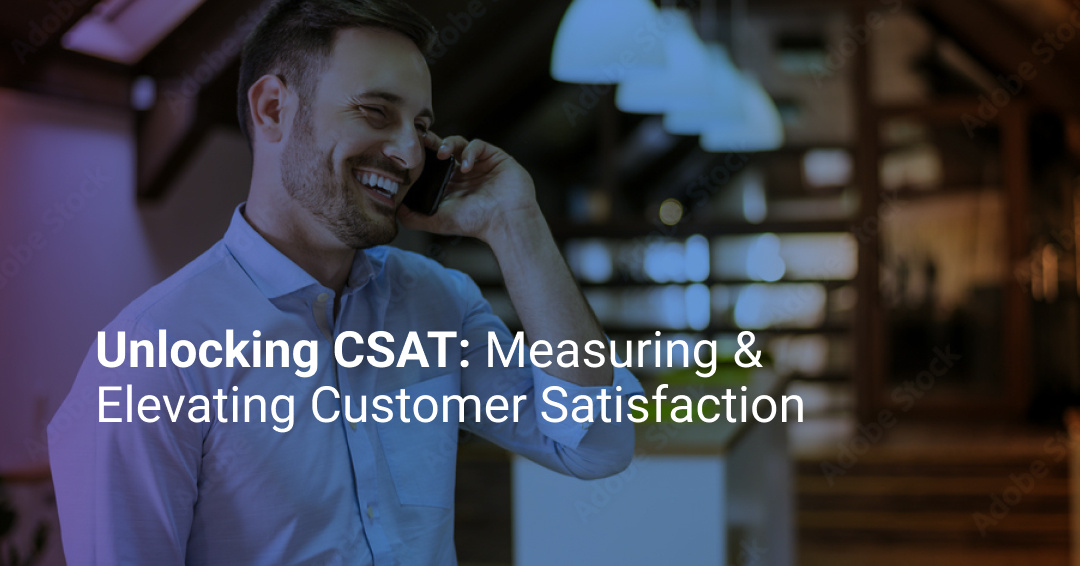12 Call Center Metrics You Should Be Using to Improve CX in 2025
Call center metrics are the most important performance indicators that monitor how effectively your call center is running. This includes anything...
IVR and IVA are both technologies that allow customers to interact with a company without having to speak to a live agent. They have two purposes. First, they make customer service sustainable as a company grows. Second, they make it easy for customers to solve their own problems.
Unfortunately, they haven't always been successful in that second point. IVR in particular has garnered a reputation for frustrating customers. That failure is caused by some key differences between the two technologies.
IVR stands for interactive voice response. It is a technology that uses pre-recorded audio prompts to guide customers through a series of tasks. For example, an IVR system might ask a customer to press 1 for customer service, press 2 for sales, or press 3 to hear account information.
IVA stands for intelligent virtual agent. Some call it "intelligent virtual assistant." It is a more advanced technology that uses artificial intelligence (AI) to understand and respond to customer queries. IVAs can be used to provide self-service support for a wide range of customer needs, from account information to troubleshooting.
In general, IVR allows businesses that need to provide basic self-service support. It can be a low-cost option, but IVRs with many recorded responses may be quite expensive. IVA is a better option for businesses that need to provide a more personalized and intelligent experience, or that have a high volume of customer calls.
The differences between IVR and IVA matter because they affect the customer experience and the ROI of the technology. As AI technology continues to develop, IVA is expected to become more affordable and accessible to businesses of all sizes. This will make it a more viable option for businesses that are looking to improve their customer service and business performance.
If the business needs to provide basic self-service support at a low cost, IVR may do the job. However, if the business needs to provide a more personalized and intelligent experience, or that has a high volume of customer calls, IVA may be a better choice. Because personalization matters to customers more than ever, IVA is quickly replacing IVR as the industry standard.
Here are some additional reasons why the differences between IVR and IVA matter:
IVR systems typically provide a more limited and generic experience than IVA systems. This can lead to customer frustration, especially if the customer has a complex question or issue. IVA systems, on the other hand, can provide a more personalized and conversational experience, which can lead to higher customer satisfaction.
IVR and IVA systems cost about the same. However, IVA systems can also lead to improved customer satisfaction, reduced call volume, and increased sales. One in three consumers will leave a brand after one bad experience. On the other hand, improving customer experience may increase sales revenue by 2 to 7 percent.
IVA systems can free up employees to focus on more complex tasks, such as customer support and sales. This can lead to increased employee productivity and satisfaction. IVRs on the other hand can sometimes free up employees, but more often than not they lead to poor experiences and frustrated customers that are redirected to agents. As a result, conversations become more heated and complicated, making it harder for your teams to be productive and potentially affecting your brand perception.
IVA systems can be quickly and easily updated to reflect changes in products, services, or policies. This makes it easier for businesses to adapt to changing market conditions. IVRs on the other hand require a lot more effort as they depend directly on the decision trees previously programmed into the system. In the case of IVRs, sometimes updates can be quick, but they can also become a process that is time consuming.
IVA systems can collect data on customer interactions, which can be used to improve the customer experience and the overall business performance. IVRs also collect data and can integrate with other systems but they tend to be a bit more limited in terms of analysis and depth.
Here are some examples of how IVR and IVA are used in contact centers for different industries:
As AI technology continues to develop, IVA is becoming a more popular choice for businesses of all sizes. IVAs offer a number of advantages over IVR systems, including:
As a result, more businesses are expected to use IVAs to manage their customer service needs in the future.
An IVR technology is a buffer between your customer representative and the end user. Before IVRs, agents had to pick up every call to learn the customer's problem and redirect them to the correct department to solve it. An IVR system usually has a predetermined menu with multiple options that guide callers to choose the right options based on the reason behind their call.
IVR systems typically use a menu system to guide customers through their desired task.
Here is a step-by-step overview of how IVR works:
IVR systems can be used to provide a variety of self-service features, such as:
IVR systems can also be used to collect customer information, such as names, addresses, and phone numbers. This information can be used to improve the customer experience and to target marketing campaigns.
IVR systems use a combination of hardware and software to work. The hardware typically includes a computer, a telephony card, and a speakerphone. The software includes the IVR system's operating system, the menu system, and the voice recognition engine.
The IVR system's operating system controls the flow of information between the hardware and the software. The menu system provides the customer with a list of options to choose from. The voice recognition engine converts the customer's spoken words into text.
When the customer presses a number on their phone, the IVR system sends a signal to the computer. The computer then interprets the signal and determines which menu option the customer has selected. The computer then sends a signal to the speakerphone, which plays the corresponding audio message.
If the customer needs to speak to a live agent, the IVR system can transfer them to the appropriate department. The IVR system can also collect customer information, such as names, addresses, and phone numbers. This information can be used to improve the customer experience and to target marketing campaigns.
Modern systems today can also understand basic verbal inputs, such as "yes," or "representative." Because customers choose what to say to the IVR, these are called "natural language IVR."
The history of IVR can be traced back to the 1930s, when Bell Labs created the Voder, a machine that could analyze the English language and produce human-like audio. This technology was the first to use computers to synthesize speech, and it paved the way for the development of IVR systems.
In the 1960s, the Bell System built a dual-tone multifrequency (DTMF) technology, enabling the development of phones with keypads. This made it possible for customers to interact with IVR systems by pressing buttons on their phone.
The first commercial IVR systems were introduced in the 1970s. By the 1980s, IVR systems became more sophisticated. They began to use voice recognition technology to understand customer requests, and they could access databases to provide information, becoming more user-friendly.
In the 1990s, IVR systems became even more popular. They were used by businesses of all sizes to provide customer service, collect information, and automate tasks.
In the 2000s, IVR systems continued to evolve. They began to understand customer requests more accurately and provide more personalized service. Today, IVR systems are an essential part of customer service for many businesses, but they never won the hearts of customers. With the advent of AI, their popularity has begun to fade.
Historically, IVR delivered many benefits to businesses, including:
Overall, businesses of all sizes have gained value from IVR. It is a versatile and powerful technology that can be used to automate customer service, reduce costs, and increase efficiency. Until recently, IVR was the only option to make customer service sustainable for many companies.
While IVR delivered many benefits, it also sports some limitations. Here are some of the most common limitations of IVR:
Despite these limitations, IVR has still provided value for businesses of all sizes. While it's impossible to completely avoid these limitations, there are ways to reduce their impact. Here are some tips for overcoming the limitations of IVR:
By following these tips, you can overcome the limitations of IVR and improve the customer experience.
Intelligent virtual agents (IVAs) are similar to IVRs because they redirect users to the correct department and reps and reduce human agents' workloads. However, they are a far superior option, given that they incorporate natural language processing, artificial intelligence, and generative AI capabilities to improve customer service and solve problems better and faster.
Intelligent virtual agents (IVAs) are computer programs that can simulate human conversation. They use artificial intelligence (AI) to understand and respond to natural language queries. IVAs are used in a variety of applications, including customer service, education, healthcare, and entertainment.
Here is a step-by-step overview of how an IVA works:
IVAs can be used to perform a variety of tasks, such as:
As people became comfortable with virtual assistants in their homes and pockets, businesses became comfortable with virtual agents handling customer service inquiries. Today, IVAs outperform traditional tools like IVR, and they even boast a few advantages over human-based customer service.
IVAs have the potential to revolutionize the way we interact with technology and the way we get things done. Here are some additional details about how IVAs work:
Intelligent virtual agents (IVAs) are the next generation of customer service automation. More than an AI IVR, the history of IVAs can be traced back to the early 1960s, when researchers began to develop computer programs that could simulate human conversation. One of the earliest IVAs was ELIZA, which was developed by Joseph Weizenbaum at MIT in 1966. ELIZA was a rule-based system that could simulate a Rogerian psychotherapist.
In the 1970s, IVAs began to use artificial intelligence (AI) to improve their ability to understand and respond to human language. One of the most influential IVAs of this era was Parry, which was developed by Kenneth Colby at Stanford University in 1972. Parry was a chatbot that simulated a paranoid schizophrenic.
In the 1980s, IVAs began to be used in commercial applications. One of the first IVAs to be used in a commercial setting was the Virtual Customer Assistant (VCA) developed by IBM in 1984. The VCA was used to provide customer service for IBM products and services.
In the 1990s, IVAs became more sophisticated and began to be used in a wider range of applications. One of the most popular IVAs of this era was the Ask Jeeves Virtual Assistant, which was launched in 1997. In the 2000s, IVAs continued to evolve and began to use natural language processing (NLP) to improve their ability to understand and respond to human language.
Today, IVAs are used in a wide range of applications, including customer service, education, healthcare, and entertainment. IVAs are becoming increasingly popular as AI technology continues to develop. They offer a number of advantages over traditional customer service tools, such as 24/7 availability, the ability to handle a wider range of tasks, and the ability to learn and improve over time.
You've already read about the differences between IVA and IVR. Now it's time to discuss the advantages of replacing an IVR with IVA in a call center or contact center.
Here are some of the benefits of an IVA contact center:
Overall, IVAs offer a number of advantages over IVRs. They are more accurate, more personalized, and able to learn and improve over time. IVAs are also more scalable and cost-effective than IVRs. All of these benefits allow your entire customer service operation, including the contact center, deliver more value. If trends continue, IVAs will continue their path in replacing IVR's leading role in customer service.
Here are some additional benefits and opportunities with an IVA contact center:
With recent AI developments, IVAs should continue to offer even more benefits over IVRs. They are a powerful tool that can be used to improve the customer experience, reduce costs, and increase efficiency.
While IVAs have many benefits, they also have some limitations. Here are some of the most common limitations of IVAs:
Despite the limitations, IVAs are still worth the investment for most businesses. Not all IVAs are created equal. Many companies have jumped on the AI bandwagon and quickly stitched together a customer service tool to sell. While they use AI, the end result is more of an AI IVR than a true IVA.
Mosaicx has methodically and consistently developed our solutions over the past 30 years, and we're one of the few providers to offer a dedicated success coach to ensure the IVA continues to provide maximum value over time. Choosing a trustworthy IVA provider is key in minimizing limitations of the technology and maximizing long-term value.
If you read this far, you'll know IVA is a better value than IVR. IVR served the customer service industry well for decades, but it is falling out of favor. As AI develops and customers become comfortable with virtual assistants in everyday life, IVA is positioned to be the go-to customer service tool for the future.
Here are some of the trends that we can expect to see in the future of IVR and IVA:
Everything is trending upward for IVAs. Replacing IVR is just one of several important virtual agent trends experts are tracking in the coming years.

Call center metrics are the most important performance indicators that monitor how effectively your call center is running. This includes anything...

Businesses across industries have changed or evolved over the decades, but one thing that has remained the same is that their growth is pretty much...

Customers have several major expectations from modern businesses, but none is as challenging as them reading your mind to anticipate support you...